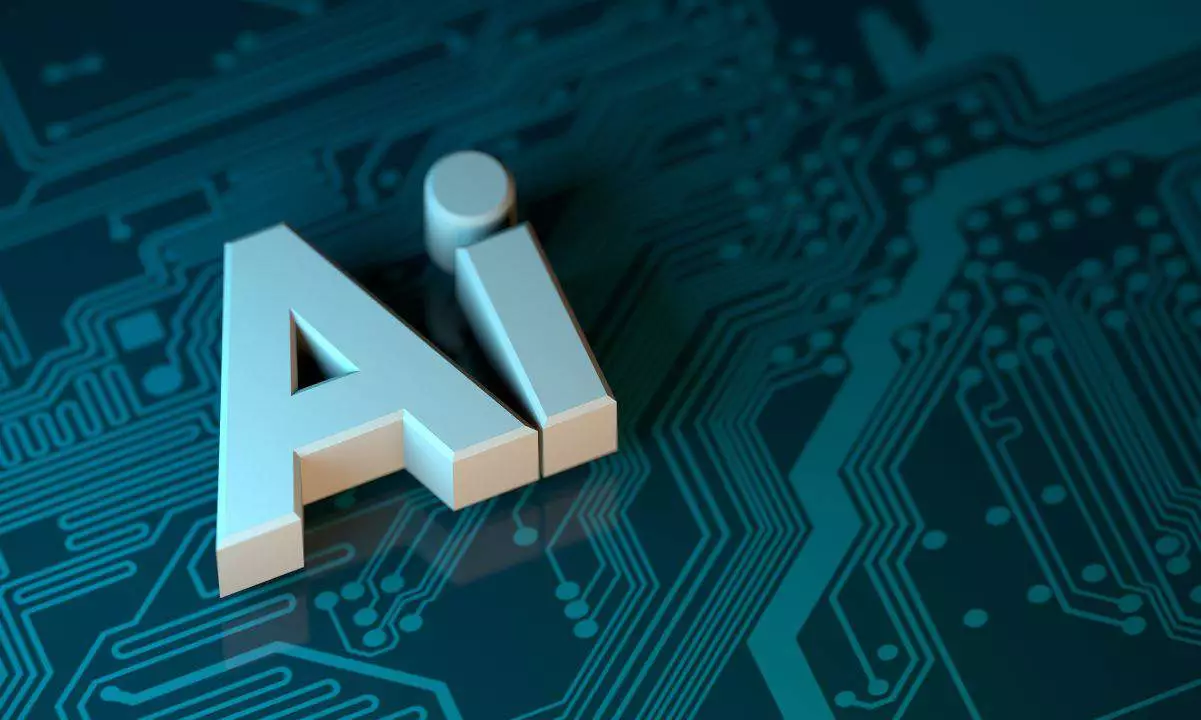The recent surge of AI-driven initiatives within the cryptocurrency sector is nothing short of eye-opening. As of now, the AI crypto realm comprises around 20 specialized tokens, with a total market cap hovering near $20 billion. This figure, while substantial, merely scratches the surface of the colossal potential that lies beneath. To frame this properly, the AI segment represents a mere 0.67% of the entire cryptocurrency market, which is dominated by more traditional sectors like Financials, weighing in at around $519 billion. This disparity prompts the question: Why is AI, a technology poised to revolutionize industries across the board, receiving such a lukewarm reception in the crypto sphere?
The answer lies in the nascent state of most of these projects. Recently, Grayscale Investments noted the AI sector’s humble beginnings while simultaneously forecasting vibrant growth on the horizon. Since 2023, this niche has multiplied in value from a modest $4.5 billion to over $20 billion. This increased market cap illustrates not just growth, but also a burgeoning interest in AI technologies as viable components within the crypto ecosystem.
TAO: A Rising Star with Potential Risks
Among the AI tokens, TAO has emerged as the leading asset with a commendable gain of 2% this year. Its performance, though positive, raises questions about sustainability—can such a small percentage-based growth in a dynamic market like crypto be considered a triumph? On the flip side, ElizaOS has plummeted by 80%, signaling that not every project is destined for fame and fortune. Here lies a crucial lesson for investors and enthusiasts: while AI promises the future, not every project will cross the finish line.
One of the most intriguing aspects of TAO is its structure, echoing Bitcoin’s design with a hard cap of 21 million tokens and scheduled halvings. While this setup may attract traditional crypto investors, the fundamental question remains: will the actual adoption of TAO and similar tokens mirror their theoretical frameworks? The ongoing enhancements, especially with the introduction of subnets for investment, indicate a commitment to growth that could foster broader acceptance of TAO. However, this intricacy of participation may discourage less tech-savvy investors, resulting in an exclusivity that the industry should aim to mitigate.
The Role of Stablecoins in Shaping the Future
Grayscale’s report identifies stablecoins as critical players within the unfolding narrative of AI cryptocurrencies. Their programmable nature offers advantages that traditional currencies cannot match, making them attractive mediums for powering AI agents. Institutions like Stripe and Meta are now foraying into stablecoin territory, hinting at a pivotal shift in both technology and regulation. With crypto legislation on the horizon, including the crypto market structure and GENIUS stablecoin bills, the regulatory landscape may finally become fertile ground for growth.
The entry of institutional players is a double-edged sword. On one hand, it provides the necessary validation to attract further investment into AI crypto; on the other hand, it may lead to an ecosystem that mirrors the very problems currently plaguing traditional financial markets, such as centralization and opacity. As perceived legitimacy increases, a delicate balance must be struck to ensure that the inherent values of decentralization remain intact.
Innovative Ventures and Revenue Models
Within this intricate framework lies an array of innovative projects showing promise. Take Prime Intellect, which has successfully trained massive models with over 30 billion parameters, leveraging idle GPUs while sidestepping traditional infrastructure. If this decentralized approach becomes mainstream, it could redefine the economics of AI training, making high-performance capabilities accessible to a wider audience while driving down costs.
Additionally, projects like Grass and Virtuals have found ways to monetize their contributions to the AI landscape. Grass, in particular, offers a rare glimpse into a non-financial entity generating significant revenue from web-scraped data. Its success demonstrates that the potential applications for AI in the crypto sphere extend far beyond mere speculation and trading. The pathway for consumer products appears promising too, with services poised to bridge a gap between advanced technology and everyday use.
While the AI crypto market currently represents a small fraction of the total cryptocurrency landscape, its potential is both immense and ripe for exploration. A fundamental shift toward real-world applications, backed by stablecoin integrations and innovative project structures, may usher in an era where AI significantly alters the course of digital finance. The road ahead is fraught with challenges, but for those willing to navigate its complexities, the rewards could be groundbreaking.


Leave a Reply